Experience the Legacy of China’s Pottery at the Xing Kiln Site
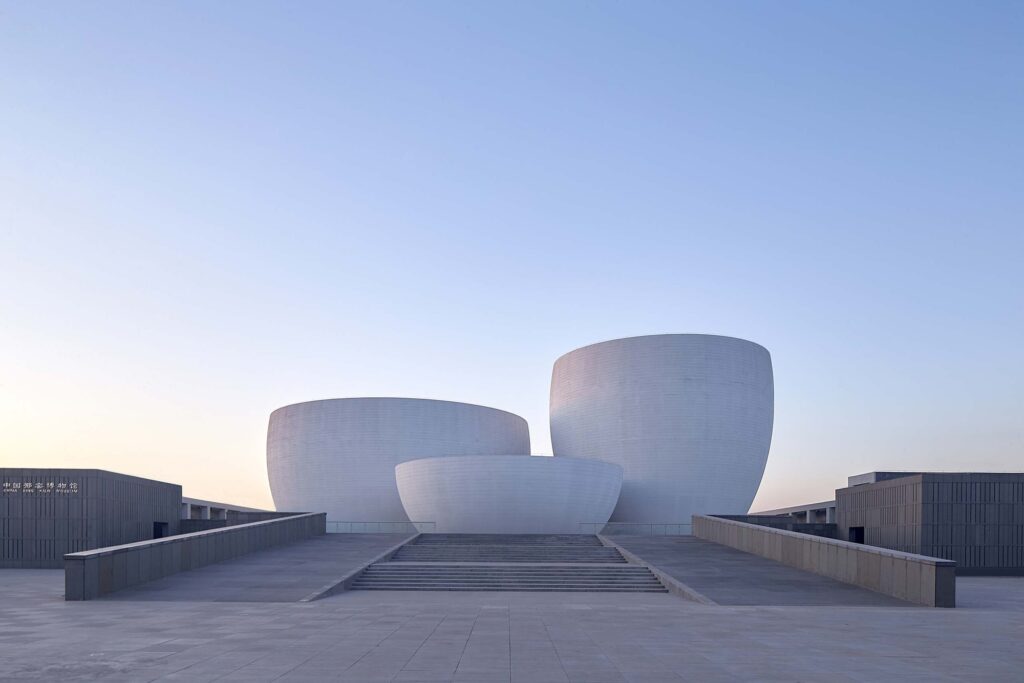
An Essential Guide to Visiting Xing Kiln Site
In This Guide
- An Essential Guide to Visiting Xing Kiln Site
- The Rich History and Legends of Xing Kiln Site
- Main Highlights: What You Absolutely Can’t Miss
- Planning Your Visit: A Practical Guide
- Tickets: Prices, Booking, and Tips
- How to Get There: A Complete Transportation Guide
- Local Cuisine and Accommodation Nearby
- Frequently Asked Questions
- Final Thoughts on Your Trip
Nestled within the picturesque landscapes of Neiqiu County, the Xing Kiln Site (邢窑遗址) stands as a testament to the rich tapestry of Chinese ceramic history. As one of the most significant archaeological finds in the Hebei province, this site offers a rare glimpse into the craftsmanship and artistry that flourished during the Tang and Song dynasties, a period marked by remarkable advancements in porcelain production.
Visitors to the Xing Kiln Site are not merely stepping onto ancient ground; they are entering a narrative that intertwines art, culture, and history. The site is renowned for its distinctive celadon glazes, a hallmark of the era, which showcased both aesthetic beauty and practical utility. As you wander through the remains of the kilns, you can almost hear the whispers of artisans who dedicated their lives to perfecting their craft.
The site is easily accessible and provides a serene environment for exploration, away from the bustling crowds often found at more tourist-centric locations. Here, you can engage with the remnants of history, learn about the intricate processes involved in ancient porcelain making, and appreciate the profound impact of this craft on Chinese culture.
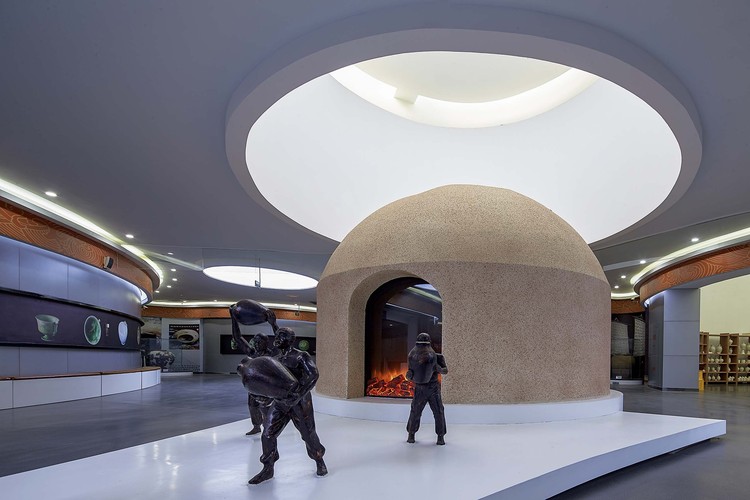
Xing Kiln Site.
Whether you are a history enthusiast, a lover of art, or simply seeking a unique experience off the beaten path, the Xing Kiln Site promises an enriching journey into one of China’s most celebrated crafts. Prepare to immerse yourself in a world where ancient traditions breathe life into modern curiosities, making it an essential stop on your exploration of China’s vibrant heritage.
The Rich History and Legends of Xing Kiln Site
The Xing Kiln Site, located in Neiqiu County, Hebei Province, stands as a testament to China’s rich ceramic heritage, dating back to the Northern Song Dynasty (960–1127 AD). This ancient site is not just a location; it is a vibrant chapter in the story of Chinese pottery, reflecting the ingenuity and artistry of its creators.
A Journey Through Time
Historical Significance
The Xing Kiln is often celebrated as one of the four great kilns of ancient China, alongside the renowned Ru, Ding, and Jun kilns. It specialized in producing fine stoneware, particularly famous for its delicate and translucent pieces adorned with a jade-like glaze. The quality of Xing ceramics was so esteemed that they were sought after by the imperial court and affluent families, making them a symbol of status and refinement.
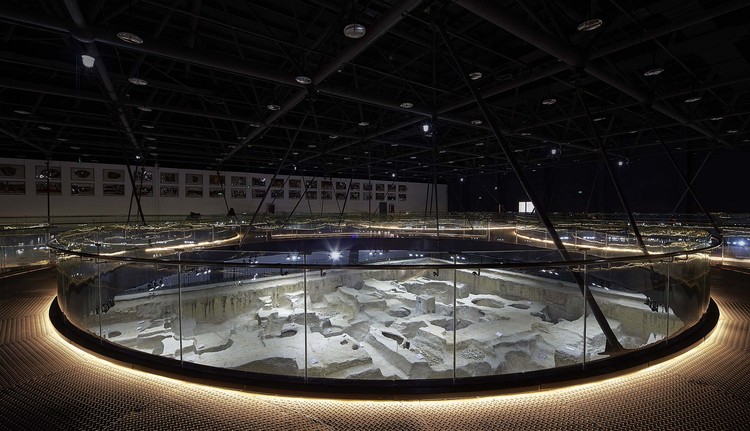
Xing Kiln Site.
The kiln site itself was strategically located along the ancient trade routes, facilitating the exchange of goods and ideas. This accessibility allowed for the integration of various artistic styles and technologies, resulting in the unique characteristics that distinguish Xing ceramics. Over the centuries, the kiln produced an array of utilitarian and decorative items, including bowls, plates, and vases, which were widely traded both domestically and abroad.
Legends and Myths
Beyond its historical facts, the Xing Kiln Site is steeped in legends that add a layer of mystique to its legacy. One such legend revolves around a master potter known as Wang Zhi. It is said that Wang Zhi was blessed by a goddess who taught him the secrets of creating the perfect glaze. His creations were so exquisite that they captivated not only the local community but also reached the imperial court, where the emperor himself commissioned a series of ceremonial pieces for state banquets.

Xing Kiln Site.
Another tale tells of the Celestial Dragon, believed to reside near the kiln. According to local folklore, this mythical creature would emerge during the full moon to bless the potters with good fortune, ensuring that their wares would be flawless. Many potters would leave offerings at the kiln in hopes of receiving the dragon’s favor, further intertwining the craft of ceramics with the spiritual beliefs of the time.
Archaeological Discoveries
Excavations at the site have uncovered numerous artifacts, including kiln remains, shards of pottery, and evidence of the techniques used in ceramic production. These findings provide valuable insights into the technological advancements of the period, such as the development of high-temperature kilns and glazing methods that continue to influence modern ceramics.
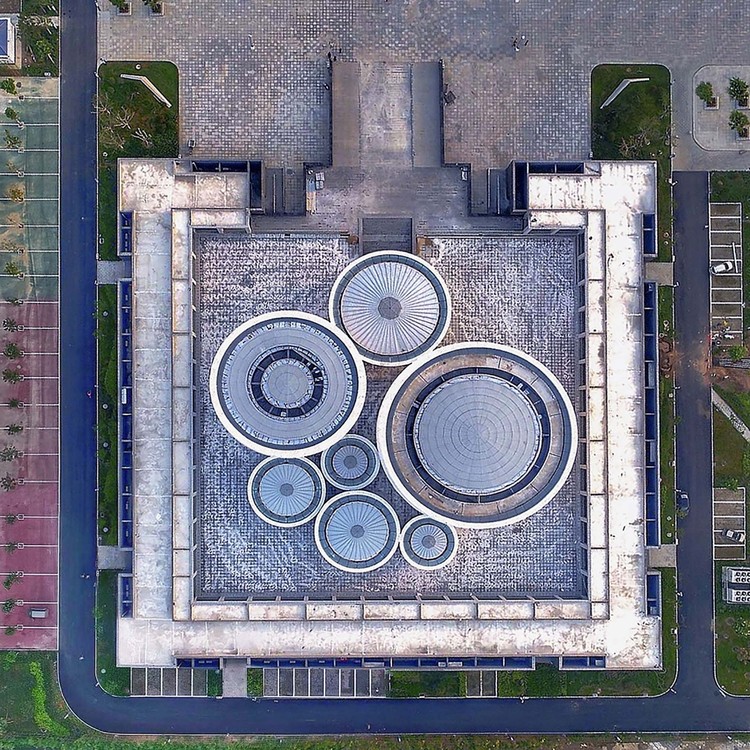
Xing Kiln Site.
The site is not only a window into the past but also a living museum, where visitors can witness the ongoing efforts to preserve and restore the art of Xing ceramics. Artisans today still employ traditional techniques, ensuring that the rich legacy of the Xing Kiln lives on.
Visiting the Site
For international travelers intrigued by the intersection of history and culture, the Xing Kiln Site offers an immersive experience. Visitors can explore the remnants of ancient kilns, admire the beauty of restored ceramics, and even participate in pottery workshops that echo the practices of centuries past.
As you stroll through this historical site, take a moment to appreciate the stories embedded in the ceramics and the legends that have shaped this remarkable place. The Xing Kiln Site is not merely a destination; it is an invitation to engage with the profound cultural tapestry of China.

Xing Kiln Site.
Main Highlights: What You Absolutely Can’t Miss
Discovering the Xing Kiln Site: A Journey Through History
The Xing Kiln Site (邢窑遗址) in Neiqiu County is a treasure trove for enthusiasts of Chinese history and ceramics. Recognized for its exquisite porcelain production dating back to the Northern Song Dynasty, this site offers a unique glimpse into the ancient art of pottery and the evolution of Chinese ceramics. Here are the main highlights you simply cannot miss during your visit:
1. Ancient Kiln Ruins
The centerpiece of your exploration is the well-preserved kiln ruins, which are a testament to the advanced ceramic techniques of their time. Walking through the remains of these kilns allows you to appreciate the craftsmanship and ingenuity that went into producing some of the finest porcelain in history.
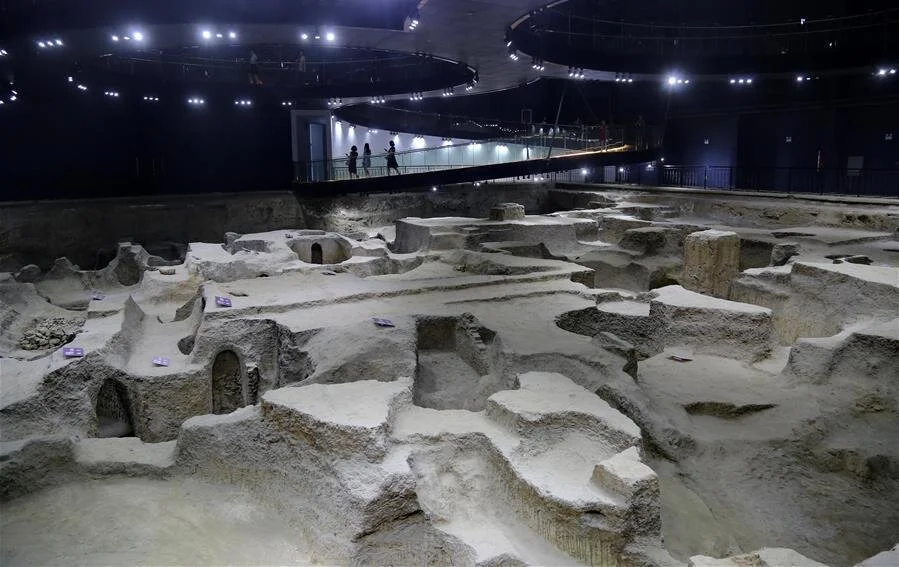
Xing Kiln Site.
2. Ceramic Artifacts
As you wander the site, keep an eye out for the numerous ceramic artifacts displayed in the onsite museum. These artifacts, ranging from bowls and vases to decorative pieces, showcase the intricate designs and glazes that characterize Xing Kiln ceramics. Each piece tells a story of the artisans who dedicated their lives to perfecting their craft.
3. Interactive Exhibits
The site features interactive exhibits that engage visitors in the art of pottery-making. Try your hand at shaping clay or learn about the firing process that transforms raw materials into beautiful ceramics. These hands-on experiences deepen your understanding of the techniques that have been passed down through generations.
4. Scenic Surroundings
Nestled in the picturesque landscape of Neiqiu County, the Xing Kiln Site is surrounded by lush greenery and rolling hills. Take a moment to appreciate the natural beauty that complements the historical significance of the area. Ideal for photography enthusiasts, the scenic views provide a perfect backdrop for your exploration.

Xing Kiln Site.
5. Cultural Significance
The Xing Kiln Site is not just a location for archaeological interest; it is a vital part of China’s cultural heritage. Learn about its importance in the development of Chinese porcelain, which has influenced both domestic and international pottery styles throughout history. The site is often regarded as a cornerstone in the history of ceramics, making it a must-visit for anyone interested in cultural heritage.
6. Nearby Attractions
After exploring the Xing Kiln Site, consider visiting nearby attractions such as the Puli Pagoda, which offers a panoramic view of the surrounding area, or enjoy the local cuisine at one of the nearby restaurants. These sites complement your visit and provide additional insights into the region’s rich history and culture.
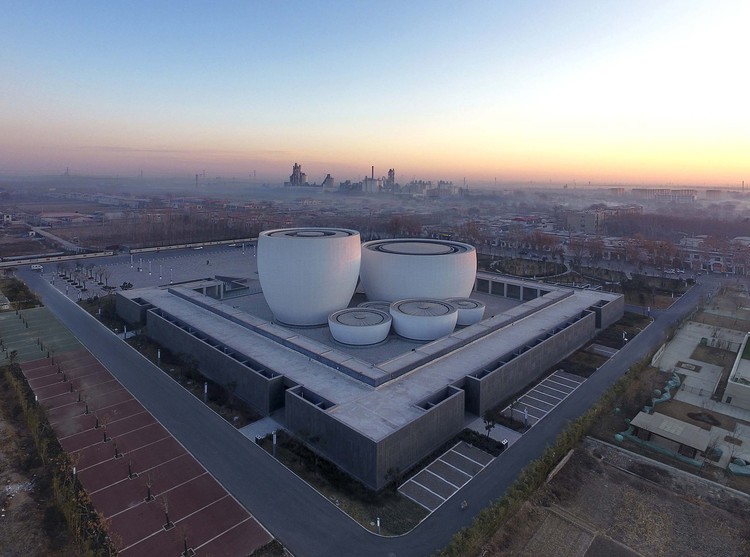
Xing Kiln Site.
Conclusion
The Xing Kiln Site is an essential stop for those intrigued by the artistic and historical aspects of Chinese culture. From its ancient kilns to the artifacts and interactive experiences, this site invites you to step back in time and appreciate the artistry that has shaped China’s ceramic legacy. Don’t miss the chance to immerse yourself in this captivating blend of history and culture!
Planning Your Visit: A Practical Guide
Journey to the Xing Kiln Site: A Practical Guide for Travelers
Visiting the Xing Kiln Site (邢窑遗址) in Neiqiu County offers a glimpse into the rich tapestry of Chinese ceramic history. As one of the oldest and most significant kiln sites, it is a must-see for anyone interested in Chinese culture and history. To ensure you make the most of your visit, here’s everything you need to know.

Xing Kiln Site.
Getting There
- Location: The Xing Kiln Site is located within Neiqiu County, Hebei Province, China. The exact postal code for the area is 054200.
- Transportation:
- By Air: The nearest major airports are Beijing Capital International Airport (PEK) and Beijing Daxing International Airport (PKX). From there, you can take a train or bus to Neiqiu County.
- By Train: Neiqiu has a railway station with connections to major cities. Check train schedules in advance for the best options.
- By Bus: Local buses from nearby towns and cities frequently run to Neiqiu County.
Best Time to Visit
- Seasons: The ideal time to visit is during the spring (April to June) and autumn (September to November) months when the weather is mild. Summers can be hot and humid, while winters can be quite cold.
- Hours of Operation: Although specific hours may vary, it’s wise to plan your visit during daylight for the best experience. Aim to arrive early to avoid crowds.
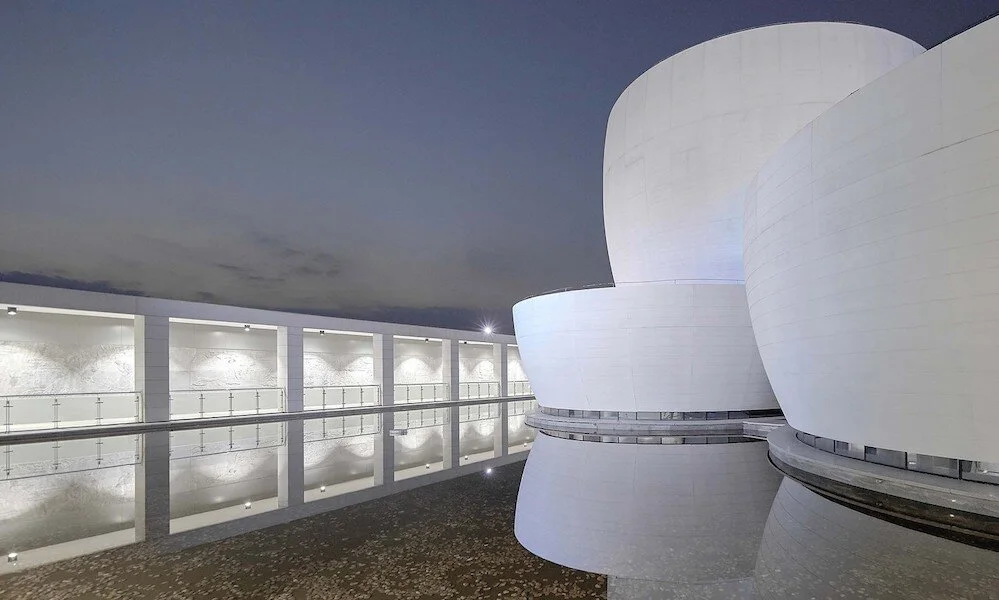
Xing Kiln Site.
What to Expect
- Site Overview: The Xing Kiln Site showcases the historical significance of ceramic production in ancient China. You will find remnants of kilns, pottery, and artifacts that tell the story of ceramic evolution over centuries.
- Duration of Visit: Plan to spend approximately 1 to 2 hours exploring the site. This will allow ample time to appreciate the exhibits, take photos, and possibly engage with local artisans if available.
Nearby Attractions
While in Neiqiu County, consider visiting these nearby points of interest:
- Puli Pagoda: An ancient observation tower offering panoramic views of the surrounding area.
- Ancestral Temple of Bianque: A noteworthy cultural site dedicated to the famed physician of ancient China.
- Longevity Berry Farm: Explore local agriculture and perhaps enjoy some fresh produce.
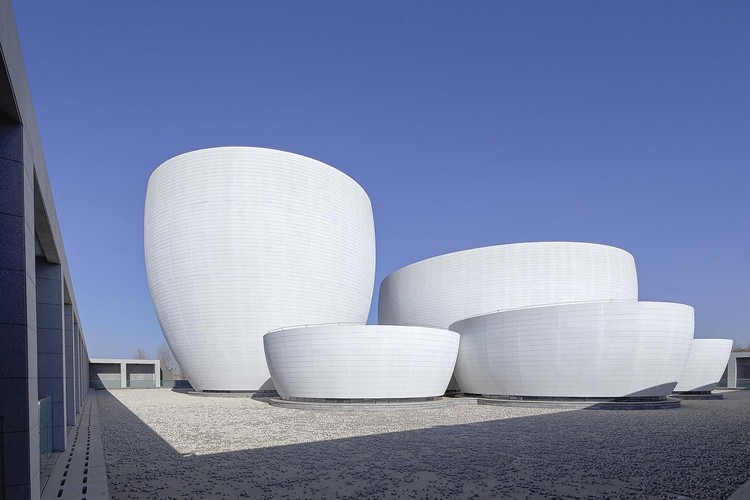
Xing Kiln Site.
Dining Options
- Local Cuisine: Neiqiu County offers a variety of dining options where you can savor traditional Chinese dishes. Look for local eateries serving specialties like dumplings, noodles, and roasted meats.
- Recommended Restaurants: Research online or ask locals for recommendations to find the best spots near the site.
Accommodations
If you plan to stay overnight or longer, consider the following options:

Xing Kiln Site.
- Hotels: There are various hotels and guesthouses in Neiqiu County that cater to different budgets. Booking in advance is recommended, especially during peak tourist seasons.
- Bed and Breakfasts: For a more intimate experience, look for local bed and breakfasts that offer cozy accommodations and a taste of local hospitality.
Additional Tips
- Language: While some locals may speak English, it’s helpful to learn a few basic Mandarin phrases to enhance your interaction.
- Cash: Carry some cash, as smaller establishments may not accept credit cards.
- Respect the Site: As a historical site, it’s important to respect the artifacts and follow any guidelines provided by the site management.
By following this practical guide, you’ll be well-prepared to explore the Xing Kiln Site and immerse yourself in the fascinating history of Chinese ceramics. Enjoy your journey through time!
Tickets: Prices, Booking, and Tips
Visiting the Xing Kiln Site (邢窑遗址), a remarkable archaeological location in Neiqiu County, Hebei Province, is a journey into China’s rich ceramic history. This site, known for its historical significance, offers an immersive experience into the art and culture of ancient Chinese pottery. To ensure your visit is as smooth and enjoyable as possible, here’s everything you need to know about tickets, booking, and some handy tips.
Ticket Information
-
General Admission: Tickets to the Xing Kiln Site are typically priced around RMB 30 (approximately $5). This fee grants you access to the site and its fascinating exhibits, including ancient kilns and ceramics.
-
Discounts: Reduced prices may be available for students, seniors, and children. Be sure to bring identification to avail of these discounts.
-
Group Rates: If you are traveling with a larger group, inquire about group rates, which can offer savings on ticket prices.
Booking Your Visit
-
On-Site Purchase: Tickets can be purchased directly at the entrance of the site. This is often the simplest option for individual visitors or small groups.
-
Online Reservations: While online ticketing options may vary, check local travel websites or platforms like TripAdvisor or Viator for potential pre-booking opportunities. This can save you time and ensure you have a spot, especially during peak tourist seasons.
-
Guided Tours: For a more in-depth experience, consider booking a guided tour that includes the Xing Kiln Site. Many tours offer comprehensive insights into the history and culture of the area, alongside visits to related attractions.
Tips for Your Visit
-
Best Time to Visit: The ideal time to explore the Xing Kiln Site is during the spring (April to June) and autumn (September to November) months when the weather is pleasant, making your exploration more enjoyable.
-
Plan for a Half-Day: Allocate about 2-3 hours for your visit. This allows ample time to stroll through the site, absorb the historical context, and take photographs.
-
Wear Comfortable Shoes: The site involves some walking, and the terrain can vary. Comfortable footwear will enhance your experience.
-
Explore Nearby Attractions: Don’t miss the chance to visit nearby sites such as the Puli Pagoda and local eateries that offer authentic Hebei cuisine. This can enrich your cultural experience and provide a fuller picture of the region.
-
Capture the Moment: Bring a camera or smartphone to document your visit. The ancient kilns and surrounding landscapes provide stunning backdrops for photography.
By understanding the ticketing process, booking options, and planning your visit wisely, you can fully enjoy the historical and cultural treasures that the Xing Kiln Site has to offer. Happy travels!
How to Get There: A Complete Transportation Guide
Navigating Your Way to the Xing Kiln Site
Visiting the Xing Kiln Site (邢窑遗址) in Neiqiu County is a journey into the rich tapestry of Chinese history, particularly the evolution of ceramics. To make your trip as smooth and enjoyable as possible, this guide will navigate you through the various transportation options available to reach this fascinating archaeological site.
Getting to Neiqiu County
1. By Air:
The nearest major airports to Neiqiu County are Beijing Capital Airport (PEK) and Beijing Daxing International Airport (PKX). Both airports serve numerous international routes, making them convenient entry points for travelers.
- From Beijing Capital Airport (PEK):
- Travel Time: Approximately 3–4 hours to Neiqiu.
-
Transportation Options:
- Train: Take the Airport Express Train to Dongzhimen Station, then transfer to line 2 of the Beijing Subway to reach Beijing West Railway Station. From there, take a high-speed train to Handan. A taxi or local bus can then take you to Neiqiu County.
- Bus: Direct airport shuttles are available to various bus stations in Beijing. From these stations, you can catch a long-distance bus to Neiqiu County.
-
From Beijing Daxing International Airport (PKX):
- Travel Time: Approximately 3.5–4.5 hours.
- Transportation Options:
- Train: Take the Daxing Airport Express to Daxing Station, then transfer to a train to reach Beijing West Railway Station. Continue as mentioned above.
- Bus: Similar to PEK, you can find shuttles to major bus stations where you can board a bus to Neiqiu.
2. By Train:
For those already in China, traveling to Neiqiu County by train is an excellent option.
- High-Speed Rail:
- The closest high-speed rail station is Handan East Railway Station.
- Travel Time: About 1.5–2 hours from Beijing.
- From Handan: After arriving at Handan, you can take a taxi or a local bus to Neiqiu County, which is approximately 45 kilometers away.
3. By Bus:
Neiqiu County is well-connected by long-distance buses from various cities in Hebei Province and beyond.
- From Handan:
- Travel Time: Approximately 1 hour.
-
Bus Station: Buses to Neiqiu can be found at Handan Long-distance Bus Station.
-
From Beijing:
- Travel Time: Approximately 4–5 hours.
- Bus Station: Long-distance buses leave from various stations, including the Beijing Zhan (Beijing Railway Station).
Local Transportation in Neiqiu
Once you arrive in Neiqiu County, getting to the Xing Kiln Site is straightforward:
- Taxis: Local taxis are readily available. Simply tell the driver “Xing Kiln Site” (邢窑遗址).
- Public Buses: Several local buses run routes that pass near the site. Check local schedules for details.
- Bicycles: If you’re feeling adventurous, renting a bicycle can be a delightful way to explore the picturesque surroundings.
Tips for Travelers
- Language: English may not be widely spoken, so consider downloading a translation app or learning a few basic Mandarin phrases to enhance your communication.
- Timing: Plan your visit during daylight hours to fully appreciate the site and its context within the landscape.
- Weather: Check the local weather forecast before your journey, as seasons can significantly affect travel conditions in Hebei Province.
Embarking on a journey to the Xing Kiln Site not only unveils the artistry and history of Chinese ceramics but also immerses you in the cultural fabric of the region. Safe travels!
Local Cuisine and Accommodation Nearby
Visiting the Xing Kiln Site in Neiqiu County offers a unique glimpse into the rich history of Chinese ceramics, but the experience doesn’t end there. To make the most of your trip, indulge in the local cuisine and enjoy comfortable accommodations nearby.
Culinary Delights
Neiqiu County is home to a variety of eateries that showcase authentic Hebei flavors, providing a perfect complement to your cultural exploration. Here are some recommended dining spots:
-
Lao Feng Restaurant (老风餐馆)
Known for its hearty local dishes, this restaurant serves traditional Hebei fare, including dumplings and noodle soups. The warm ambiance and friendly service make it a popular choice among locals and travelers alike. -
Neiqiu Vegetarian Restaurant (邢县素食餐厅)
For those looking for plant-based options, this vegetarian restaurant offers a range of dishes made with fresh, local ingredients. The menu features everything from stir-fried vegetables to tofu-based specialties. -
Xing Kiln Tea House (邢窑茶馆)
After exploring the kiln site, relax at this charming tea house, which serves various types of Chinese tea along with light snacks. It’s a great place to unwind and reflect on your day while enjoying the serene surroundings. -
Local Street Food Stalls
Don’t miss the chance to sample local street food! Try stinky tofu or jianbing (Chinese crepes) from vendors near the site. These snacks provide an authentic taste of the region and are perfect for a quick bite on the go.
Comfortable Accommodations
After a day of immersing yourself in history and flavors, you’ll want a cozy place to rest. Here are some accommodations to consider:
-
Neiqiu County Hotel (邢县酒店)
This modern hotel offers clean, comfortable rooms and is conveniently located near the Xing Kiln Site. With amenities such as free Wi-Fi and breakfast options, it’s ideal for both solo travelers and families. -
Liuhe Garden Hotel (六合花园酒店)
A bit more upscale, this hotel features elegantly decorated rooms and a beautiful garden. It provides a peaceful atmosphere and is a short drive from the kiln site, making it easy to explore the area. -
Jinlong Inn (金龙宾馆)
For budget-conscious travelers, Jinlong Inn offers simple yet comfortable accommodations. The friendly staff and central location make it a great base for discovering local attractions. -
Homestays
For a more personal experience, consider staying at a local homestay. Many families in the area offer guest rooms, allowing you to immerse yourself in the local culture and hospitality.
Conclusion
Exploring the Xing Kiln Site is just the beginning of your adventure in Neiqiu County. With delightful local cuisine and a range of accommodations, you can fully immerse yourself in the history and culture of this fascinating region. Enjoy your journey!
Frequently Asked Questions
Your Guide to the Xing Kiln Site: Frequently Asked Questions
1. What is the Xing Kiln Site?
The Xing Kiln Site (邢窑遗址) is an archaeological site located in Neiqiu County, Hebei Province, China. It dates back to the Northern Song Dynasty (960-1127 AD) and is renowned for its historical significance as a center of ceramic production. The site showcases ancient kilns and remnants of pottery, highlighting the rich ceramic culture that has developed over centuries.
2. How do I get to the Xing Kiln Site?
The Xing Kiln Site is accessible by various means of transportation. If you’re traveling from Beijing, you can take a high-speed train to Shijiazhuang, followed by a bus or taxi to Neiqiu County. Local public transportation options include buses that connect major cities to Neiqiu. It’s advisable to check local schedules in advance, as they can vary.
3. What are the opening hours of the Xing Kiln Site?
The site is typically open to visitors from 9:00 AM to 5:00 PM daily. However, it’s recommended to check ahead, as hours may change due to special events or maintenance work.
4. Is there an entrance fee?
Yes, there is a nominal entrance fee to visit the Xing Kiln Site. The fee helps maintain the site and its facilities. Exact prices may vary, so it’s best to confirm at the entrance or check online before your visit.
5. What can I expect to see at the site?
Visitors to the Xing Kiln Site can explore the ancient kilns, remnants of pottery, and informative displays about the history of ceramic production in the region. The site also features beautiful landscapes that provide a glimpse into the past of Chinese craftsmanship.
6. Are there any guided tours available?
Yes, guided tours are often available and can enhance your experience by providing deeper insights into the history and significance of the site. It’s advisable to book a tour in advance, especially during peak tourist seasons.
7. What nearby attractions should I consider visiting?
In addition to the Xing Kiln Site, consider visiting the Puli Pagoda nearby, which offers scenic views and a glimpse into local architecture. Neiqiu County is rich in cultural heritage, so exploring local temples and markets can also provide an enriching experience.
8. What should I bring along for my visit?
When visiting the Xing Kiln Site, it’s a good idea to wear comfortable shoes for walking and exploring. Bringing a camera is recommended, as the site offers many picturesque spots. Additionally, pack water and snacks, as amenities may be limited on-site.
Final Thoughts on Your Trip
As you wrap up your journey to the captivating Xing Kiln Site, you carry with you not just memories, but a deeper understanding of China’s rich ceramic heritage. This ancient site, nestled in the serene landscape of Neiqiu County, is a testament to the artistry and craftsmanship that has thrived in this region for centuries.
Embrace the Experience
Visiting the Xing Kiln Site allows you to:
- Witness History: Feel the echoes of artisans who meticulously shaped clay into beautiful pottery, a craft that reflects both utilitarian needs and artistic expression.
- Engage with Culture: The site is more than just a relic; it’s a vibrant chapter in China’s narrative, illustrating the evolution of ceramic technology and aesthetics over time.
- Appreciate the Craft: Take a moment to admire the intricate designs and techniques that have been passed down through generations, each piece telling its own unique story.
Reflections on Your Visit
As you leave, consider these reflections:
- Connectivity: You’ve connected with a vital aspect of Chinese culture that intertwines with everyday life, from dining to decoration.
- Inspiration: Whether you are a history buff, an art lover, or simply a curious traveler, the beauty of the Xing Kiln Site can inspire creativity and appreciation for craftsmanship.
- Legacy: Remember that the legacy of the Xing Kiln extends far beyond its physical remnants; it lives on in the hearts of artisans and enthusiasts around the world.
Your Journey Continues
Your exploration of the Xing Kiln Site is just one stop on your journey through China’s vast and diverse cultural landscape. With each destination, you unlock new stories and experiences that shape your understanding of this ancient civilization. Carry this knowledge forward as you explore further, and let it enrich your travels, one unique site at a time.
As you depart, may you be inspired to share the tales of the artisans, the beauty of their creations, and the lasting impact of this remarkable heritage with others. Safe travels!